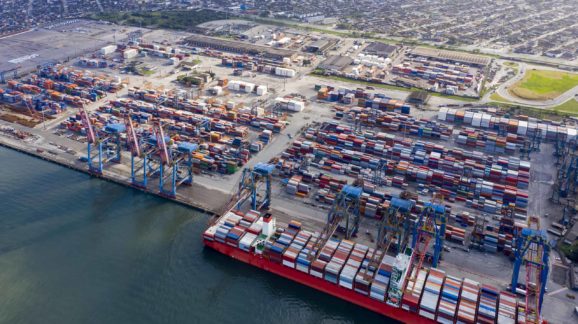The Real Culprit in Our Supply-Chain Crisis
The supply chain for an Apple iPhone crosses an international border more than 600 times, and if it didn’t, you probably wouldn’t have one — it would be too expensive. Globalization has come under renewed assault from both parties, and the supply-chain crisis has led to a renewed “Made in America” push. But, like the problem of jobs going offshore, the supply-chain crisis is not caused by globalization. The culprit is an uncompetitive level of regulation and taxation, and protectionism only makes that problem infinitely worse.
Many Americans are infuriated when they hear that 3.7 million American jobs have been lost because of the trade deficit with China since the year 2000. But many millions more of jobs have been created by international trade. Protectionist tariffs will not make globalization go away, given that America still has to compete globally. Protectionism only makes America’s economy even more uncompetitive.
A successful nation helps its companies succeed. But in their own country, American companies are often treated like enemies of the state, chiefly because of a childish anti-capitalism that only hurts American workers in the end. The “Made in America” push seeks to help American companies, but what they propose would only further suffocate American companies. They are making the very type of a progressive policy mistake, which is to think that good intentions obviate the need to worry about real-world results.
For all the job losses of recent decades, the hallmark of the current supply-chain crisis is not unemployment but the opposite: a historic labor shortage fueled by the lowest rate of labor-force participation in decades. Chiefly as a result of a critical shortage of truck drivers, scores of container ships bearing hundreds of thousands of 20-foot containers are now stranded off the coast of Los Angeles, whose ports handle 40 percent of America’s container traffic.
Shippers have explored the possibility of alternative ports, to no avail. Most of the alternatives are too small for the mega ships loitering offshore. That is one consequence of the Jones Act, which requires any ship transiting between American ports to be made in America, owned by Americans, and crewed by Americans. As a result of the exorbitant costs imposed by the law, America’s coast-wise trade is frightfully tiny, one reason that most American ports are too small to handle large container ships. The World Economic Forum rates America’s shipping-industry regulations as the most restrictive in the world, chiefly because of the Jones Act.
Stifling regulations have left America with the most inefficient ports in the world. A recent review of container-port efficiency ranked the ports of Los Angeles and Long Beach below ports in Tanzania and Kenya, near the bottom of the list of 351 top ports. America’s ports are effectively third-world. The 50 most efficient ports in the world are mostly in Asia and the Middle East; none are in America.
As a result of the shipping logjam, shipping costs have skyrocketed, with the price to ship a container from China rising by a factor of ten in recent weeks. The combination of labor shortage and shipping-price spikes is already fueling a level of inflation that most Americans have never seen and can hardly imagine. The Atlanta Federal Reserve recently downgraded its GDP growth estimate for the third quarter to 1.3 percent from its earlier forecast of 6.1 percent, raising the specter of a ruinous stagflation-style recession.
The immediate cause of the supply-chain crisis is what the Cato Institute’s Scott Lincicome calls a “serious mismatch” between supply and demand. With the COVID-19 pandemic largely over around the world, the demand for goods of all kinds has soared, while supply-chain capacity reduced by the lockdowns has struggled to adjust. Some are now slamming the vulnerability of our global supply chain, but what has made supply chains inflexible and brittle is stifling government regulations.
Simply put, all the things now standing in the way of a rapid adjustment of supply chains are government policies.
Paying workers to take a long COVID-19 leave of absence was a major mistake, and those benefits ended only in September of this year. One firm estimates that in the retail sector, some 350,000 unfilled openings will cost companies $223 billion by the holiday season. The labor-force participation rate has recovered only half of its steep COVID-19 losses, but thanks chiefly to Obama-era policies, America’s labor-force participation rate was already the lowest it had been since the 1970s. A record 51 percent of small businesses have openings that they can’t fill.
Read the full article at National Review.
